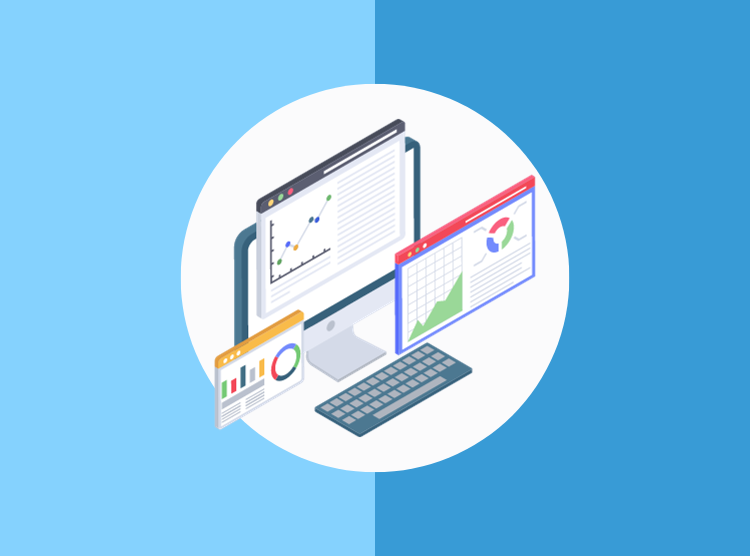Probably, yes.
Google has begun sunsetting many commonly used data attribution models in Google Analytics. Starting in May 2023, Google began phasing out the following attribution types from Google Ads and Google Analytics:
- First-click
- Linear
- Time Decay
- Position-based
This leaves two remaining data attribution models: data-driven (which Google recommends) and last-click. If you were using any a model that has been (or will be) phased out, Google platforms will automatically make the change to data-driven, though you have the option to manually change to last-click attribution if that works best for you.
Wait, what is Data Attribution?
In digital marketing, data attribution helps marketers to understand and analyze the buyer journey, including any touch points with any digital marketing materials, website visits, website departures (and returns), or even interactions with advertisements. Analysts and marketers may then use that data to help determine the success of different marketing efforts, inform budget allocations and improve the user experience. Data attribution is a huge asset to digital marketers when they are looking to justify marketing budgets and advertising spend. Data attribution can provide insight into what is currently working and how to adjust your marketing mix to maximize the ROI of your advertising spend.
What is Data-Driven Attribution?
The most recent data attribution model that Google has incorporated into its platforms is data-driven attribution. This model assigns credit dynamically to each touchpoint in the user journey based on all available data indicating how important each touchpoint was to the conversion action. For example, if the vast majority of users saw a specific ad before converting, Google would assign a larger amount of credit to that touchpoint. One of the big benefits of data-driven attribution is the ability to consider the entire consumer journey, not just a few key touchpoints.
Challenges with “Traditional” Data Attribution
Traditional data attribution models (including first-click, last-click, linear, time decay, and position-based) have faced several new obstacles that make their data less accurate and therefore less reliable. Often, these attribution models will oversimplify the user journey or not consider the relevancy of each touchpoint, assigning greater or less value to a touchpoint than is appropriate.
When we consider the variety of digital channels that a user can engage with currently, it’s no small wonder that “first click” is considered an outdated data attribution model. A user may be engaged with your brand on social media, smart TVs, video platforms and more before even considering visiting your website – and even then, they likely won’t convert on their first visit. With user attention being fragmented across many different platforms, traditional attribution vastly oversimplifies what has become an immensely complicated user journey.
To complicate things even further, most users have multiple devices that they use to access the Internet. For example, a user can browse social media on their phone, check out a resource or blog post on their computer, and then watch a YouTube video being streamed to their Smart TV. Each of these platforms could feature ads for the same brand that the user is engaging with. Users can be exposed to brands on a wide variety of platforms and data attribution models need to be able to assign value to each step, especially if some platforms are showing more engagement than others.
Users are savvier than ever when interacting with digital platforms. They are often cautious to avoid clicking on advertisements, more prone to doing their own research, they opt-out of sharing data whenever possible, and they are typically loyal to a brand and advocate for using it over others. This can create trouble for data attribution since models like last-click don’t account for all these new variables and provide a skewed insight.
Google has promised to phase out their reliance on cookies by 2024 (not holding our breath here though!). Most attribution models that were traditionally available in Google Analytics completely relied on the Google Analytics cookie for measurement. As cookies are phased out, Google is building new systems that do not require cookies for measurement. Since data-driven attribution can use multiple signals to determine attribution, it is less reliant on the analytic cookie.
So, Google platforms are replacing almost all traditional attribution models with data-driven attribution. Is this a good thing?
Data-driven attribution can be a wonderful tool with a large asterisk – you need lots of data for it to be reliable. The more data, the better and more robust your results, however, most experts suggest several thousand interactions can give a reliable data set. This sets a difficult precedent for small businesses and niche businesses which may use a mix of traditional data attribution models to help them make marketing decisions. Google is leaving last-click data attribution to provide an alternative to data-driven, but this obviously has its own flaws and weaknesses.
Another large issue with data-driven attribution models is data thresholding. Data thresholding occurs when there is a low enough volume of data it will be automatically omitted from results. This creates odd-looking results for analysts, but it is Google’s way of protecting user privacy in case a low-volume result could be used to identify someone. Data-driven results rely on this data from Google and several omissions of data could result in some severely skewed data attribution.
Impact of Privacy Regulations:
Privacy regulators also affect data attribution models, but they have a particularly strong effect on data-driven attribution. Strict cross-border data transfer laws exist to protect consumers and the GDPR enforces it regularly. PIPEDA in North America has a similar responsibility to consumers in protecting their data and online presence. While they do not necessarily prohibit data-driven attribution, they require businesses to handle personal data with care, prioritize user consent and rights, and ensure that attribution practices align with privacy principles. In most cases adherence to privacy regulations, means a reduction in the data available to inform data-driven attribution models.
How We Can Help
The restrictions on the available attribution models, combined with an increasing tendency for user data to be unavailable because of privacy constraints, means the data attribution in your web analytics may actually be less accurate than even the original attribution models that are being phased out. This will be especially true for any website that is not receiving thousands of website hits per month. Navigating the complexities of measuring attribution in this era of data privacy will requires a sound understanding of your analytics measurement protocols, your consent management platform, and the individual complexities of the ad platforms you engage with.
If this is all proving to be more of a headache than you thought, don’t worry – we’re here to help! Our specialty is turning your data into valuable insights, empowering you to make smarter marketing decisions.








